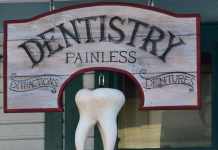“I hate going to the dentist!”
Isn’t that one of the most often heard reiterations? It is understandable that kids are afraid of dental appointments. But, you’ll be surprised to learn about the high number of adults who absolutely cringe at the idea of a visit.
Ever wondered why?
Take a look at this article on LinkedIn that lists the Top 10 Reasons why people hate dentists, and you’ll find that pain and discomfort is high in the list. Patients also fear the scary tools like drills and the high-pitched whirring noises they make. Many adults may carry the fear over from their childhood visits. Unfortunately, they transmit their apprehension to their kids.
Table of Contents
All that is About to Change – With Sedation Dentistry.
Most new age dentists now have a range of treatment options and instruments to treat you with the minimum of discomfort. But, keep in mind that practitioners performing sedation dentistry must follow the mandatory regulations. There are three levels of sedation and your doctor will choose the type that is best suited for your individual needs.
Like Dr. Jennifer Silver at the Macleod Trail Dental clinic reveals, “Our objective here is to ensure the best dental care for patients. With the help of technology and new studies, it is now possible to eliminate the fear and anxiety that patients feel when they schedule appointments.”
Best Candidates for Sedation Dentistry
Absolutely anyone can opt for sedation dentistry. But, here are the best candidates:
- Patients with severe dental issues in which extensive work is needed
- Patients with a low pain threshold who cannot tolerate discomfort
- Patients suffering from sensitivity of the teeth
- Patients with significant anxiety issues who cannot relax in the dentist’s chair
- Patients who don’t respond very well to conventional anesthetics
After discussing your requirements, the dentist will formulate a customized treatment plan to provide you with the services you need with the minimum discomfort possible.

Understanding the Levels of Sedation Dentistry
Before requesting for sedation dentistry, you may want to understand the levels of sedation and how they work. You can also read about the regulations laid down by the American Dental Association so you know exactly what to expect.
Anxiolysis or Mild Sedation
This form of anesthesia is suitable for patients that have mild anxiety, and is intended to relax the patient. You will be asked to take a pill and after it has had the time to work, you will feel completely relaxed but able to breathe on your own. Some patients are awake all through the procedure while others are sleepy. The effects of the sedation wear off within a few hours. In place of a pill, your dentist might choose to administer nitrous oxide or laughing gas by inhalation.
Light IV or Moderate Sedation
Patients who have moderate anxiety can opt for the conscious sedation or light IV as it is also called. Most doctors prescribe this form of sedation dentistry for complex and extensive dental procedures. Typically the anesthetic is administered through a vein which makes it take effect quickly. You will be aware of the activities around you, but since you will be in a deep state of relaxation, you won’t feel any pain or discomfort. The effects of this sedation can take several hours to wear off. For this reason, the doctor will ask you to have a family member or friend accompany you and drive you home after the dental procedure is complete.
Deep Sedation
Should you opt for deep sedation, you’ll drift between the conscious and unconscious states, but have some memory of the activities around you. You may not be able to respond to anything that is said to you nor will you be able to follow any kind of instructions. Like this article on WebMD explains, some patients fall asleep deeply and cannot be easily awakened. Accordingly, you will also be asked to bring along a family member or friend to drive you home since the sedation takes several hours to wear off.

How the Sedation Dentistry Procedure Works
At the time of signing you up for sedation dentistry, your doctor will check with you for diabetes, smoking, or any other medical conditions because of which you cannot receive sedation. You will also be asked not to eat or drink anything for 6 hours before your scheduled appointment.
After you arrive at the clinic, the dentist will administer the sedation by giving you a pill or injection, or allowing you to inhale the gas. Next, she will give the sedative time to work. Once the effects have taken over, she will perform the prescribed procedure on you. All through the process, you’ll have trained medical practitioners supervising you.
At the end of the procedure, you will be given time to recover sufficiently to go home. You’ll also receive a list of precautions to take and guidelines to follow for the next 24 hours. Drinking lots of water and remaining hydrated is one of the typical recommendations. Your dentist will also ask you to refrain from driving or using heavy machinery, and take the day off from work.
Contraindications of Sedation Dentistry
Before signing you up for sedatives, your dentist will likely screen you for contraindications. These can include:
- Pregnancy
- Allergies to benzodiazepines
- Eye diseases like glaucoma
- Nerve diseases like myasthenia gravis
- Asthma
- Congestive heart failure
- Bronchitis
- Chronic Obstructive Pulmonary Disorder (COPD)
- Mental issues like psychoses, depression, or bipolar disorder
- Problems with the functioning of the kidneys or liver
Sedation dentistry is no doubt advantageous in helping patients with the anxiety, pain, and discomfort of dental procedures. However, it is advisable that you get this treatment option from a certified dentist who has the training in giving you the sedatives and observing the necessary precautions.



















